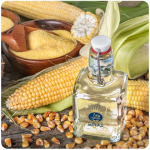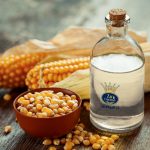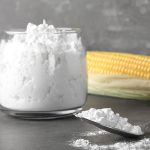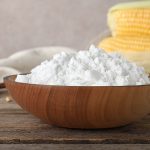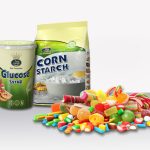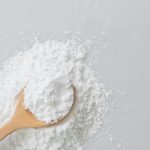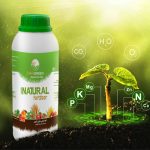products categorization
Glucose
Raw starch
Modified starch
Household consumption
Medicine
Gluten 60%
Gluten is another by-product of the corn wet milling process, which is in powder form and contains at least 60% protein. This product can be maintained and stored well. Corn gluten has a high nutrient density and its metabolic energy is 4131 kcal/kg of dry matter.
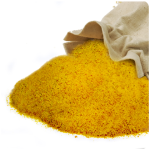
Technical Specifications
Comparison of amino acids in corn protein and soybean meal | ||
Essential amino acid substance | Soybean meal | Corn gluten |
Crude protein | 44 | 60 |
you must | 0.62 | 1.60 |
Threonine | 1.72 | 2.00 |
Isolation | 2.07 | 2.50 |
Wallin | 2.17 | 2.93 |
Methionine + Cysteine | 1.32 | 2.75 |
Corn gluten amino acid composition 60% | |
Citrulline | 0.35 |
Arginine | 0.35 |
Thronin | 3.5 |
Lucien | 43.5 |
lysine | 48.5 |
Characteristics of corn gluten 60% | |
dry matter | At least 90 |
Protein | At least 60 |
fat | Maximum 2.5 |
total ash | Maximum 1.5 |
Crude fiber | Maximum 2 |
Total volatile nitrogen | Maximum 50 |
Aflatoxin | Maximum 20 |
Description
Gluten is another by-product of the corn wet milling process, which is in the form of powder and contains at least 60% protein. This product has the ability to maintain and store well. Corn gluten has a high nutrient density and its metabolic energy is 4131 kcal/kg of dry matter. The protein in commercial corn gluten powder is 10 times the protein of grain corn, and due to processing during the separation process from corn grain, the amount of protein consumed in the diet can be reduced, while productivity increases.
Corn gluten raw protein is a rich source of methionine and cysteine and can be used in combination with soybean meal, which is rich in lysine and tryptophan, as a suitable amino acid source in animal and poultry feed.
Soybean meal protein contains large amounts of toxins called inhibitors that delay growth, while the amount of these substances in corn protein is very small.
The digestibility properties of corn gluten are unique and can be used in feeding livestock, poultry and aquatic animals to meet their nutritional goals at a reasonable price.
Very high amount of total metabolizable energy and digestible nutrients
High absorbability up to 90% in the rumen and intestine of the animal
Rich source of amino acids such as methionine, cysteine, glycine, leucine, phenylalanine, valine and tyrosine.
A source of xanthophyll as a provitamin and natural pigment (20 times the pigment in grain corn and 1.5 times the pigment in alfalfa)
A rich source of vitamin A (each kilogram of corn gluten contains 27,000 IU of vitamin A, which is 6 times the amount of vitamin A found in grain corn.)
Increasing milk production in dairy cows
palatability and odorless milk production compared to using other protein sources such as fish meal
Creating diversity in livestock and poultry diets
Effective in the growth and development of livestock and poultry tissues (suitable for raising livestock with fattening purposes)
Improving the color of meat and egg yolk
Reducing the cost of providing animal feed compared to sources such as fish meal
Final weight increase and weight gain percentage in aquatic animals without negative impact on growth, nutrition, liver enzymes and biochemical indicators.
